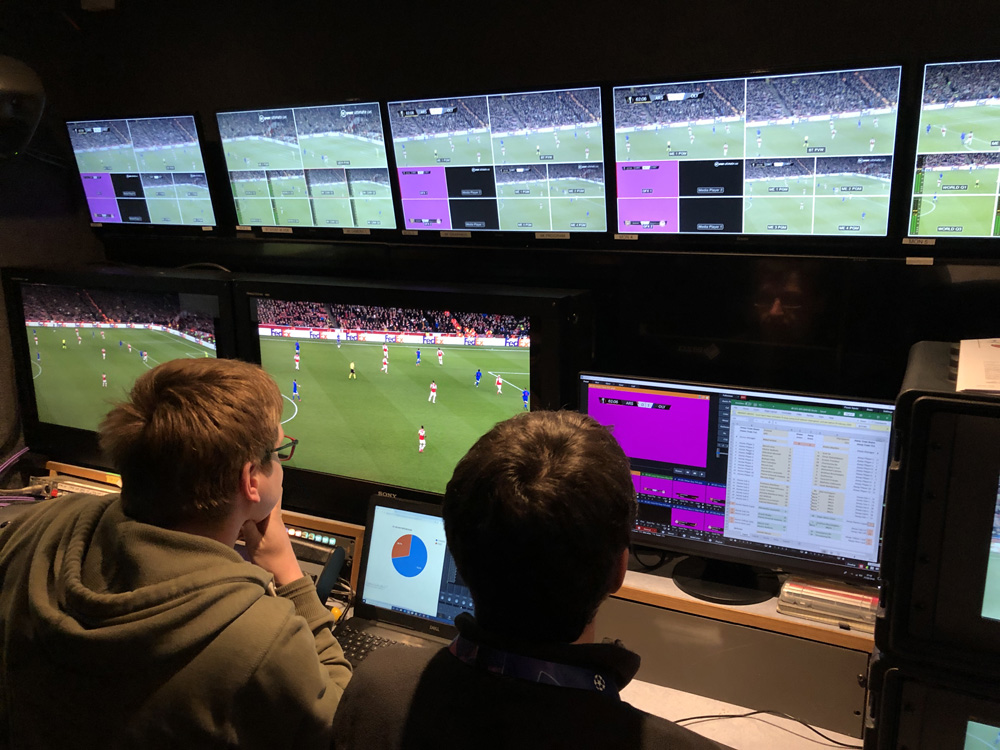
British sports fans who bought a new TV in 2022 had a buffet of 4K coverage to feast on that year: FIFA World Cup matches, Wimbledon tennis and the UEFA Champions League Final, to name just three major sporting events that gleamed on the nation’s 4K telly boxes in the higher resolution. It was the same in America, Japan and other fortunate parts of the 4K-savvy world too.
Indeed, we, alongside telly manufacturers and retailers, routinely tout big football tournaments like the Euros and World Cup as great excuses to upgrade your TV to a dazzling 4K variety. By the end of 2022, I was sick of the ‘There’s TVs, and there’s Hisense’ #PerfectMatch TV advert by Hisense, who sponsored that seasonally shifted World Cup. But this year, as we approach Euro 2024, the enthusiasm to encourage such an upgrade is muted... because the football tournament isn’t even being broadcast in 4K.
UEFA u-turn
UEFA seems to have turned its back on 4K. While UEFA produced Euro 2020 matches (in 2021 because of You Know What) in Ultra HD, its world feed production from the tournament’s 11 venues delivering native 4K and HDR (HLG) to broadcasters around the world from its International Broadcast Centre in the Netherlands, it has decided to drop native 4K production for Euro 2024. Instead, it will provide its broadcast partners with a 1080p HD feed with HDR.
This isn’t an unprecedented downgrade. UEFA decided to capture the Champions League Final last month in 1080p HD and HDR too, marking the first time since 2015 it hadn’t captured the event in 4K. The Wembley showdown between Real Madrid and Borussia Dortmund was shown in 4K and HDR by the final’s host broadcaster TNT Sports on its Ultimate channel in the UK, but it was reportedly ‘upscaled’ from the 1080p capture. While that would’ve increased perceived sharpness for those with 4K (or 8K) TVs, it naturally missed the finer details that a native 4K production would surface.
Why the u-turn? Well, as you might have guessed, the live 4K/HDR workflow is more technically difficult and expensive. In a nutshell, it involves substantially more cameras, plus four heavy-duty (3G-SDI) cables, each carrying a quadrant of the image that needs to be pieced back together again, and that output being constantly monitored by (another expense) kitted-out OB vans. If you’ve watched live sport in 4K before, you might well have experienced some teething problems – it’s doable but not easy.
And then there’s demand. At the 4K HDR summit last November, Ursula Romero, executive producer of International Sport Broadcasting (ISB), which has host-broadcast the biggest sporting events on the world stage, said that “we are constantly questioning whether we should broadcast in 4K and HDR”. She noted that younger people are increasingly interested in watching on devices as opposed to TVs, with everything revolving around social networks. Sport broadcasters are increasingly dabbling in ‘interactive this’ and ‘AR that’.
Broadcasters with 4K delivery means could technically upscale the UEFA’s Euro 2024 feed to 4K internally, but that likely won’t be adopted much if at all. In the UK, where the BBC and ITV share rights to the Euro 2024. The former has an encouraging history with 4K live broadcasting, having offered “Ultra HD trials” on its iPlayer on-demand service since 2016 that included coverage of the World Cup 2022, Glastonbury, Wimbledon and, yep, the Coronation of King Charles III. Several dramas are available in 4K on iPlayer currently, but there’s no word on whether the Beeb will upscale Euro 2024 matches or even offer the Olympics in 4K.
You might reasonably be hopeful for the latter upon learning that the International Olympic Committee (IOC), through the Olympic Broadcasting Services (OBS), is producing the games entirely in 4K and HDR (and 5.1.4 surround sound) for the first time. But the Beeb’s Olympics 2020 coverage was disappointingly capped by Discovery Communications who still own the European rights to the games, and it’s more likely 4K coverage will only be shown on the Discovery-owned Eurosport 4K channel (via Sky) again.
Will HDR prevail?
Eleven years after Sky broadcast the first live Premier League football clash, and eight years after BT Sport launched the first Ultra HD channel, live 4K sport broadcasts around the world are still patchy, whether that’s down to broadcasting rights or broadcaster interest.
On the one hand, 4K broadcast milestones are still being met – Australia will this year be offering the Olympics in the higher resolution for the first time (via Stan), while the France 2 channel’s Roland Garros coverage right now marks the first time a large-scale live event is being delivered across the country in 4K and HDR over digital terrestrial television. America offers regular NFL Sunday Night Football in 4K on the Peacock streaming service (though nothing over-the-air despite the ATSC 3.0 standard greenlighting 4K transmission), and the UK offers a decent spread of 4K fixtures throughout the year via Sky, TNT Sports and Amazon Prime Video.
But on the other hand, far more sporting events – especially those offered free to viewers – are still shown in HD 1080p and SDR. And interestingly, a 1080p HDR viewing option is emerging. You have UEFA now sticking by HDR but shunning 4K, and NBA basketball (HBO Max), Thursday Night Football (Amazon Prime) and the Super Bowl (Paramount+) also going down that HDR-prioritising route.
Eamonn Curtin, global client director for EMG/Gravity Media, a broadcast facilities provider who works with TNT Sports, told the International Broadcasting Convention (IBC) that “there's been a change in delivery format for a lot of major international tournaments and also domestic tournaments where broadcasters are now looking at 1080p HDR as the chosen one”.
signal," he said.
International Broadcasting Convention (IBC) reports that “taste tests of HD HDR versus 4K suggested that viewers preferred the sharper contrast and detail in light and shade in the HD version”. I agree that HDR over SDR makes more of a difference than 4K over HD, but 4K with HDR is substantially better than either – and, having experienced that for several sporting events over several years, you would feel shortchanged without it.
There’s no two ways about it, Euro 2024 not being captured in 4K is very disappointing for football fans who have had the tasty 4K carrot dangled in front of them, only for it to be snatched away when they want it most. Not least when you consider that 4K TVs are getting on for mass adoption. Please join me in sparing a thought for all those 8K TVs in John Lewis, and the hard work their upscalers will be doing for years to come.
If 1080p HDR feeds do become the prevailing choice for broadcasters, hopefully they are stepping stones to widespread 4K HDR production. Remember that only last year did the BBC complete its transition of local news programming to HD… 17 years after the corporation initiated high-def coverage of the FIFA World Cup and Wimbledon in 2006. We may still have a long road ahead of us.
MORE:
The best TVs you can buy
And the best OLED TVs on the planet
The best TV settings for watching Formula 1 (and other sports)
High Frame Rate (HFR TV): What is it? Why does it matter?







